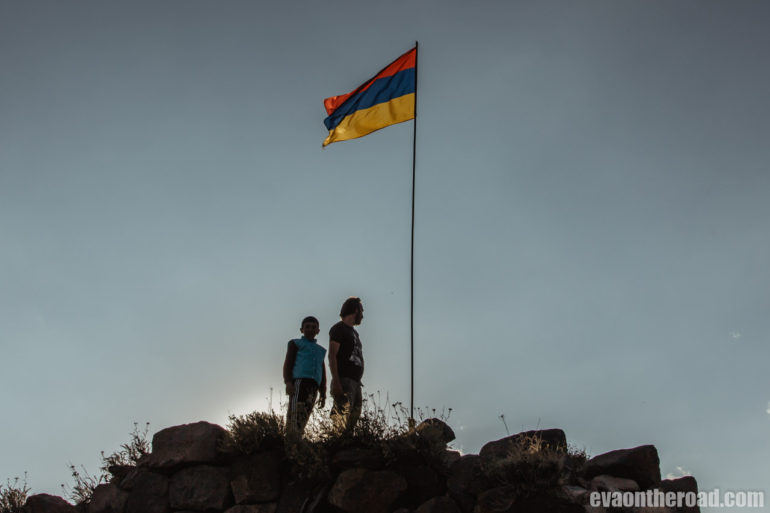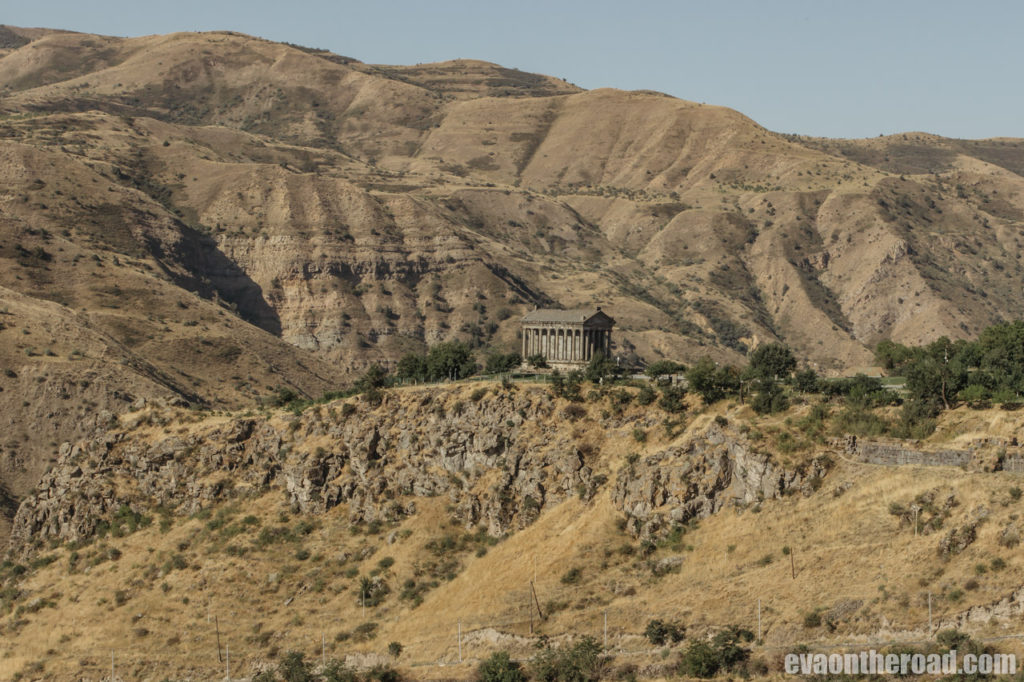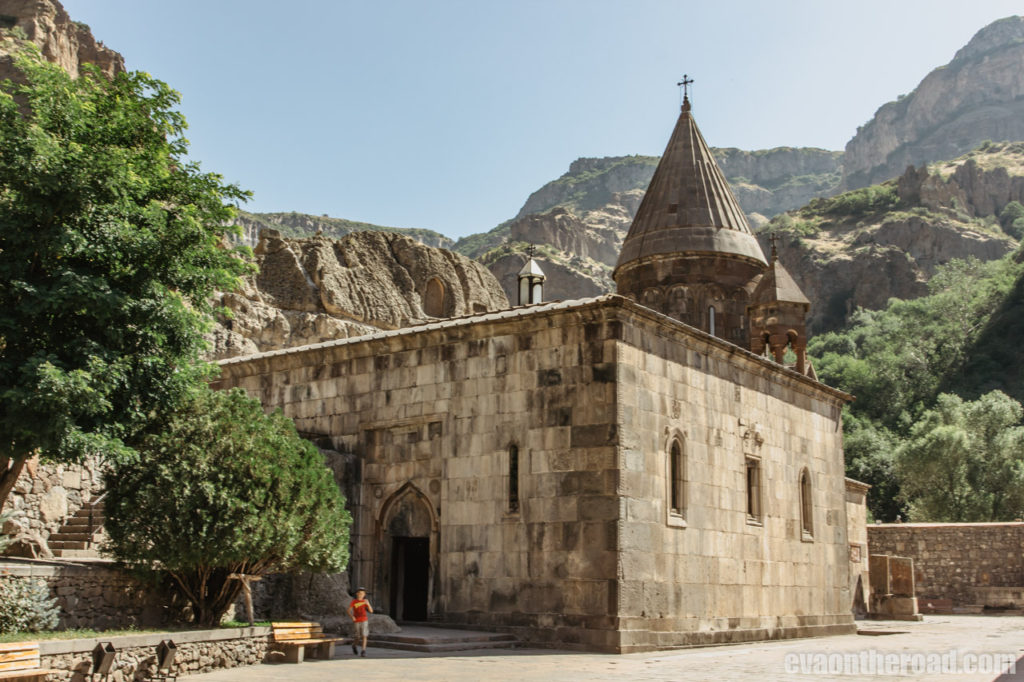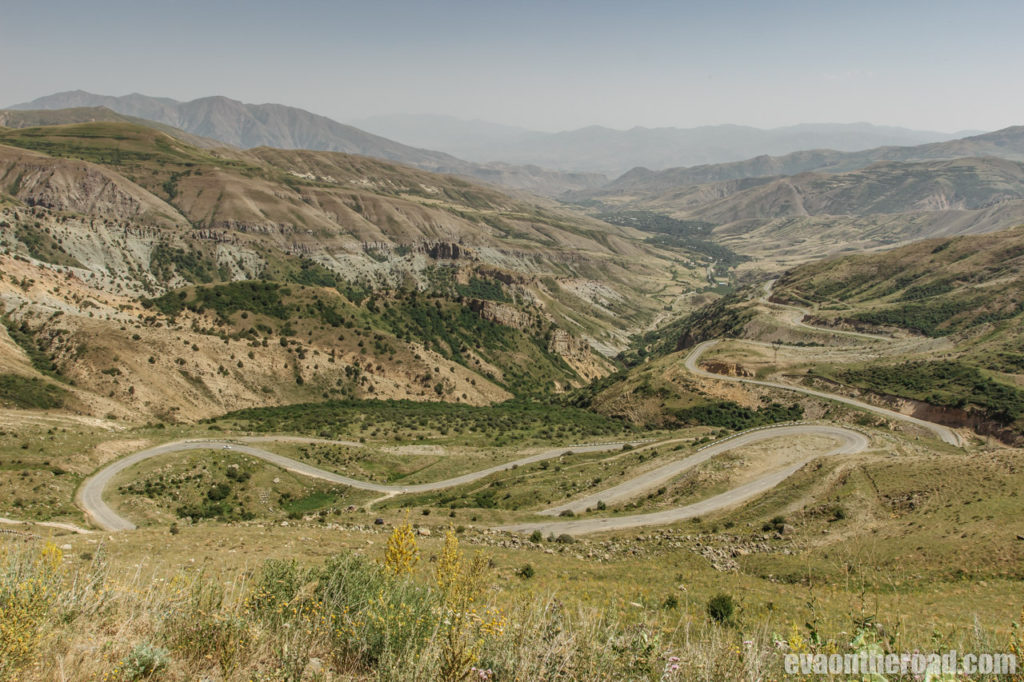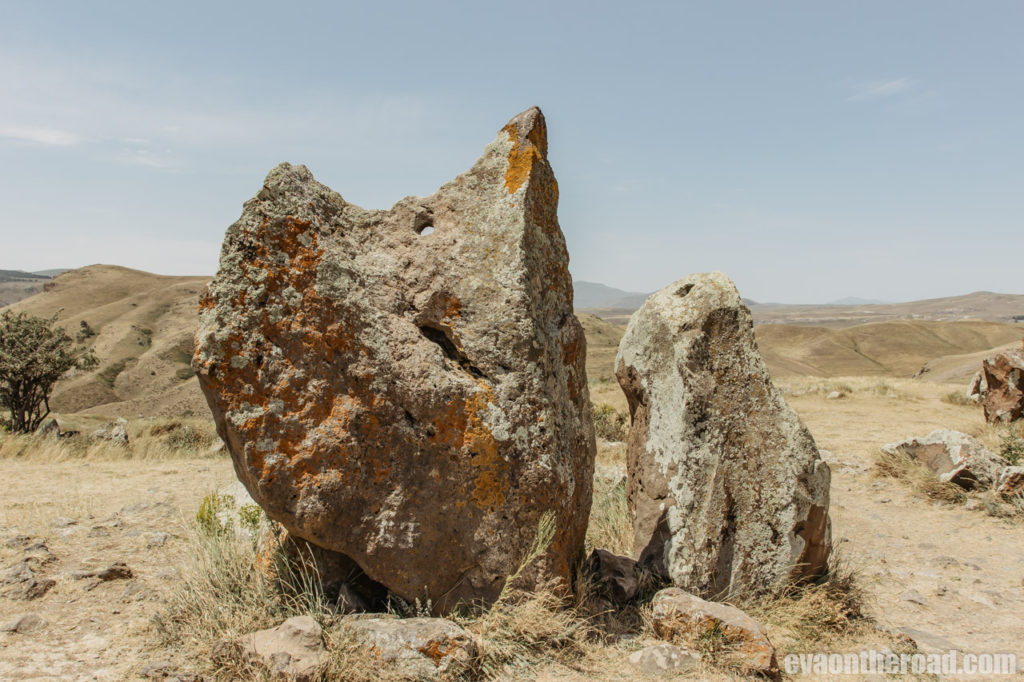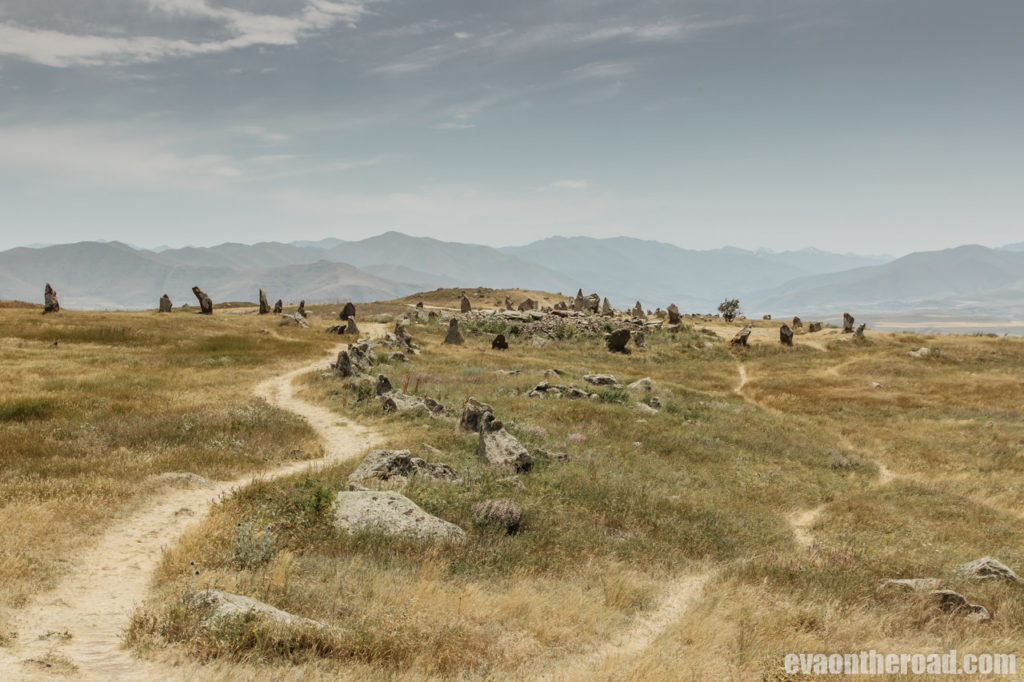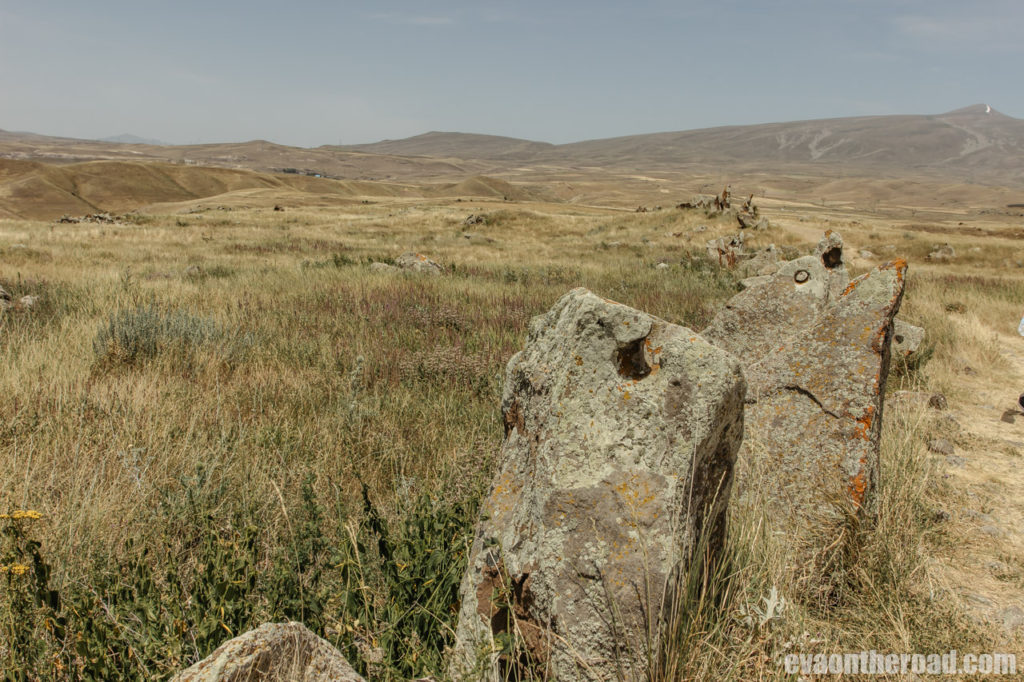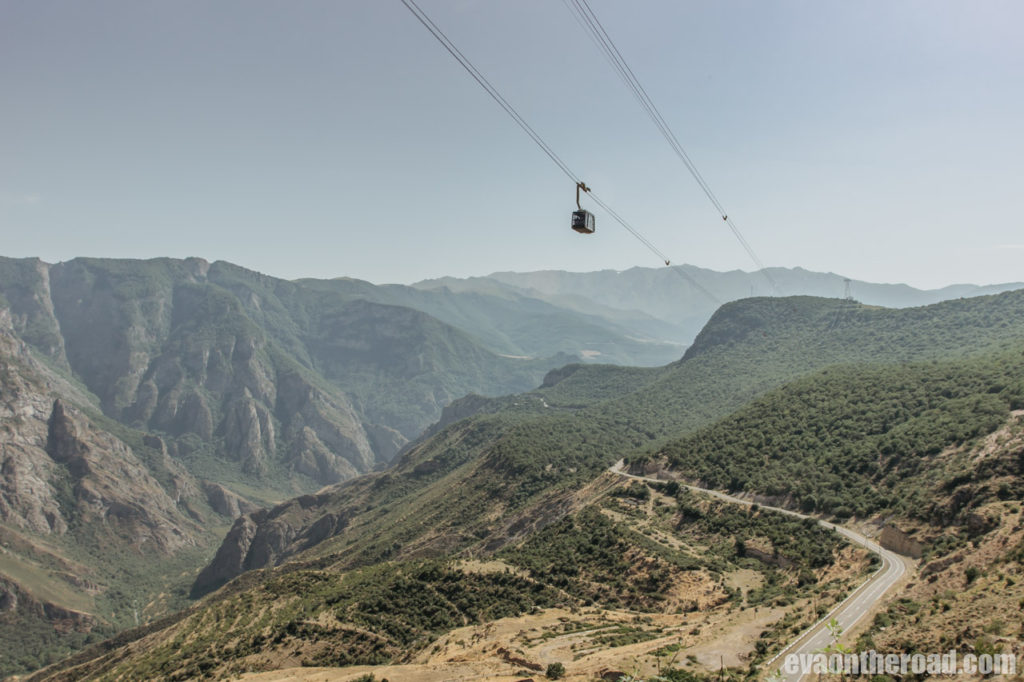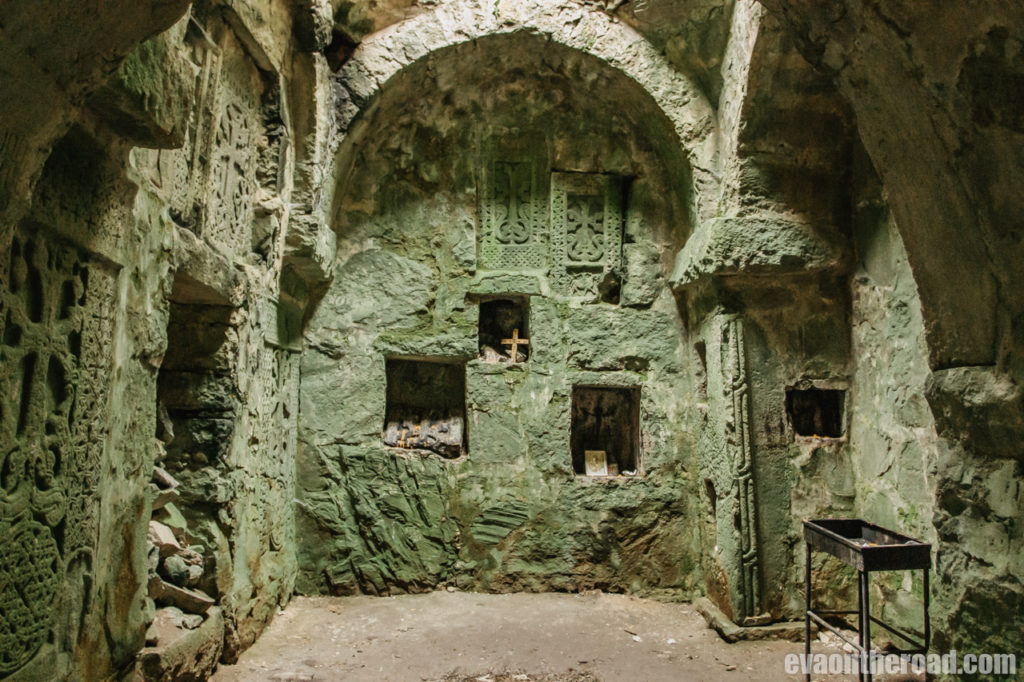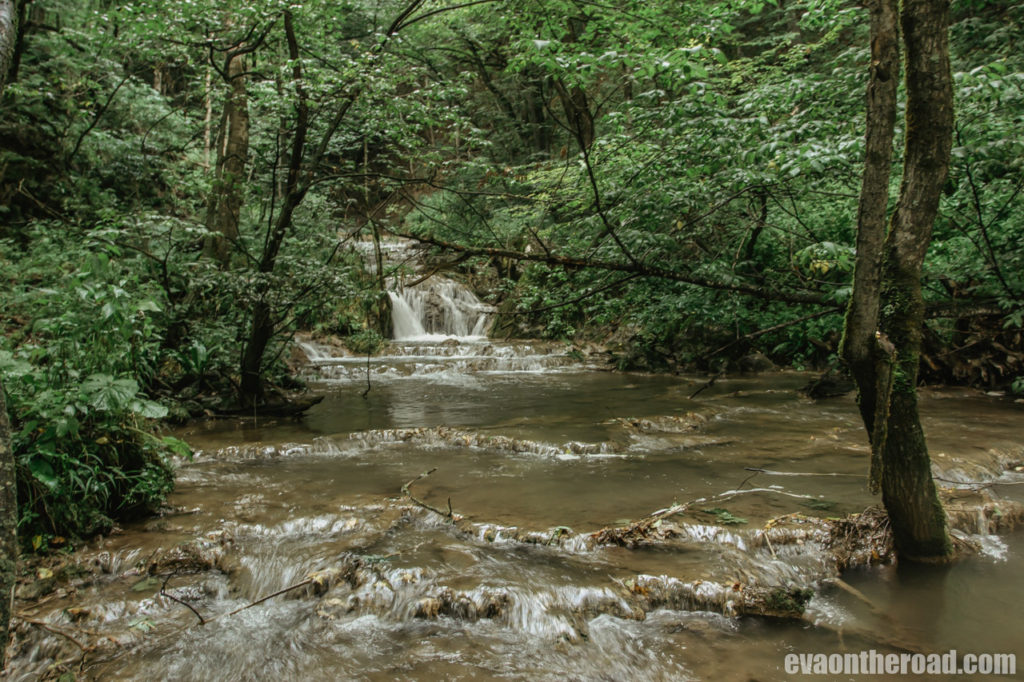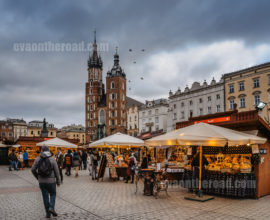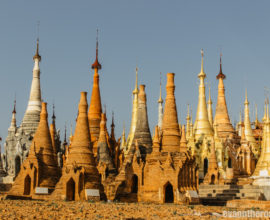TOP 14 places in Armenia
It is a country of mountains and hundreds of monasteries on the border of Europe and Asia. This would be a brief description of Armenia, which lies in the shadow of neighbouring Georgia and has so far been neglected by tourists. And that’s a shame, because it definitely has many things to offer. When you see the “Ziguli” and the Volga cars, hear the horns blowing, zigzagamong many potholes and cows on the roads, and when you are not be able to read a single sign, maybe you will experience a cultural shock. But as soon as you get around, you will fall in love with this little country in the heart of the Transcaucasus and you will not want to leave it. Poor but very friendly people who will be happy to welcome you at any time, historical monuments in the middle of beautiful scenery, diverse landscape with deciduous forests, semi-deserts and 4,000m high mountains, delicious cognac and delicious gastronomy. This is just something that makes Armenia great. Come and read why you should go there.
Obsah článku
1. Yerevan
The capital of Armenia lies at an altitude of almost 1,000 m and apparently just outside the city,the silhouette of Ararat Mountain (5,137 m) rises and is visible in fine weather. It is located on the border with Turkey. Yerevan is one of the longest permanently populated cities in the world. The original settlementwas found here in the 8th century BC and it has gradually become a cultural and trade centre. Unfortunately, it has been hit by an earthquake several times throughout history, with the consequences of the last one in 1988 being particularly destructive. Therefore, you will not find too many historic buildings and monuments in the city. Yet Yerevan, with its 1 million inhabitants, is a pleasant city full of great boulevards, shopping streets, parks, fountains, impressive buildings, museums and garden cafes. Worth mentioning are the 18th-century Blue Mosque, the lively Republic Square which has a circular shape with a fountain that “dances and sings” in the evening, the huge State Museum of Armenian History, the Armenian Genocide Memorial or the concrete Cascades that offer impressive views of the entire city and the Ararat Mountain. If you like cognac, do not miss the Ararat distillery, where you can go on a tasting tour of this amber-coloured drink. The only downside is that in the summer, the city turns to be horribly hot and it´s not possible to stand this in hot streets. Yerevan comes to life after the sunset and lives a busy nightlife.
2. Temple of Garni
About 30km away from Yerevan, on the edge of a deep gorge of the Azat River, you will find a unique and exceptional building. The only ancient temple in Armenia built in the Ionic style. It was probably built in 77 AD and dedicated to Mitra, the pagan god of the sun. The then Hellenic temple surrounded by a portico was part of the palace and fortress complex. In the 17th century, however, it was destroyed by earthquake and warfare, so today you can admire its reconstructed appearance from the 20th century. It has no gates or doors, so a lot of daylight penetrates here. At night, the temple is beautifully lit. On a more detailed tour, you will discover Arabic inscriptions on some of the stones indicating the attacks of neighbouring states, next to the temple there are ruins of Roman spa and remains of a church from the 7th century. The area is relatively small, but worth seeing. Admission is 1,000 AMD.
3. Geghard Monastery
Unique Geghard Monastery is situated only 10km from Garni in the same valley of the Azat River. Both sights are easy to be visited during one trip. The monastery was founded in the 4th century and is a jewel of Armenia. From the outside, an ordinary church with a chapel hides a lot of nooks, tombs and chapels, which are examples of Christian architecture. Most of the chapels date back to the 13th century. In one of them there is a burial chamber where Prince PapaqProshianand his wife were buried. You can also admire family crests carved into the rock or ancient khachkars (stone columns with carved motifs of flowers, animals, geometric patterns, very often decorated with a cross). The most interesting thing about the monastery is that it was carved into a rock. The rock massif creates all the vaults, columns and rooms. Light streams penetrate from above, creating a mystical spectacle. The name Geghardavank, abbreviated as Geghard, means the monastery of the lances, because a part of the lance that pierced Jesus Christ on the cross was preserved here. Today, the lance is no more here, but there are still crowds of pilgrims and tourists. If you walk a little around the monastery, you will find that the cells and rooms where the monks used to live were also carved in the rocks. Many of these rooms have been covered by earthquakes over the centuries. Because of its uniqueness, the whole complex was included in the UNESCO list. The entry is free.
4. Khor Virap Monastery
Just a few kilometres from the Turkish border, at the foot of the majestic Ararat Mountain, stands an ancient monastery, which is associated with the beginnings of Christianity in Armenia. Its name in translation means “deep well”, because the then pagan king Tiridates III. let Grigor Lusavorič, the future Gregory of the Enlightenment imprisoned in a deep dungeon under the site of today’s monastery for refusing to sacrifice a pagan goddess. After long 13 years of coexistence with snakes and scorpions Gregory was liberated, the king converted to Christianity and declared Armenia the first country where Christianity became a national religion. Today, you can visit the dungeon in which Gregory was imprisoned, if you climb down a perpendicular, iron ladder in a side chapel next to the altar. Khor Virap is for its past an important pilgrimage monastery where daily crowds head. Do not be surprised when you see doves being sold in front of the entrance. People often release them for good luck with a hope that they will fly to nearby Ararat, which though it is located on the other side of a closed border with Turkey, is still a symbol of Armenia. The monastery is not only exceptional for its past, but also for its location. It is located on a hill and in good weather you will see in all its beauty this massive fivethousand-metre high mountain with its all year round snowy peak. Entrance to the monastery is free.
5. Selim Pass
A part of the Silk Road once went through this pass which now connects the southern part of the country with Lake Sevan. Starting points are Yeghegnadzor in the south or Martuni on the lake shore. The highest point of the pass lies at an altitude of 2,410 m and is accessible along a road full of serpentines only from May to October. The pass is buried under the snow for much of the year. Just under the peak of the pass, a stone building called karavanserai stands on a flat square overlooking the southern side of the valley. Do you hear this word for the first time? It was the name of an Oriental inn, mostly located by the main trade road, which served as a caravan-stopping place (not cars as we know them today, but groups of people being on a trek on business together with their animals). As a rule, they were large, luxuriously decorated buildings. But Selim’s karavanserai is a bit different because it had to be resistant to bad weather. The stone building without windows is about 20m long, it was built in 1332. Today it is empty, but well preserved (resp. renovated). The only entrance to the building is from the hall adjacent to the main building. There used to be two inscriptions – in Persian and Armenian. The whole Persian inscription has been destroyed by vandals, but the Armenian one can be found in the upper right corner just behind the entrance. The building was built from basalt blocks and has a gable roof made of stone shingles. The main hall was divided into three naves, animals used to sleep in the right and left from the main hall, travellers in a separate room. If you enter the karavanserai area today, you feel as if you were 700 years back in the history. Sunlight penetrates through holes in the roof and illuminates the whole area magically.
6. Yeghegis valley
To get to know the life of the locals and escape the crowds, head to a beautiful valley surrounded by mountain peaks. You can easily spend a day or two here. The valleys and slopes of the mountains are full of small villages, monasteries, medieval churches and fortresses. On the main road in Yeghegnadzor turn towards Shatin, where you keep right and you arrive in a small village of Yeghegis. There are three churches that are somehow hidden off the main road, but there are signs. Park your car on the main road and stroll to the 18th-century Surp Astvatsatsin churches, the 13th-century Surp Karapet and the 14th-century Surp Zorats, which has an outdoor altar. Just beyond the village, near the river of the same name, there is another unique place, an 800-year-old Jewish cemetery (GPS 39.8681689N, 45.3624892E). Some tombstones still display Hebrew inscriptions. The oldest tombstone bears the year 1266. In the valley there are many other attractions such as Smbataberd fortress or Arates Vank and Tsakhatskar monasteries. Some of them can be reached only on foot or with an off-road car.
7. Areni wine region
Armenia is not only known for its natural beauty and ancient monasteries, but also for its ancient wine making. With neighbouring Georgia, Armenia is struggling to see which country is the cradle of wine-growing and wine-producing. Be that as it may, the truth is that wines from both countries are great (although in Armenia the grapevine is mainly used to make brandy and cognac). Unfortunately, the Soviet era did not have a very good influence on the Armenian viniculture, but over time the wine production begins to increase again and above all it improves. The vine is grown mainly in the valley below Ararat, where dessert wines are produced from the Muscadine and Saperavi varieties, as well as in the Vayots Dzor area with the village of Areni, whose vineyards climb to an altitude of 1,600m. This is the place where red Areni Noir origins. After all, near the village of Areni in 2007, archaeologists discovered the remains of a 6,100 years old winery in a cave complex (today called Areni-1). Wine presses were found there having worked by squeezing the grape juice with bare human feet. Huge wine containers buried in the ground, drinking glasses or glass fragments soaked in wine can be admired in the cave complex today. Just for the sake of interest, I must mention that in these caves, the oldest leather shoe in the world was found. Today it is stored in the State Museum in Yerevan. If you are staying in the village of Areni, each host will offer you their wine of a different quality. However, if you want a professional tasting with about 20minutes of guided tour and explanation, go to the HinAreni winery. They speak English, their wines are delicious and you can buy bottles to take away.
8. Noravank monastery
Armenia has many monasteries and churches that look the same at a first glance. However, as you examine in details, you will find out that each of them is different, somehow special, and they all have their own charm. That is given especially by theirlocation with unforgettable sceneries. Noravank Monastery (translated New Monastery) is hidden in the middle of red rocks near the famous wine village of Areni. The very journey to the monastery is a great experience. Driving through an eight-kilometrelong canyon full of caves and orange-red rocks you won’t know where to look first. The main attraction of this monastery from the 14th century is the two-storey Surb Astvatsatsin (Holy Mother of God) church. You enter the second floor by a very narrow stone staircase glued to the facade of the building. Prepare to crawl on all fours. Inside, the church is empty, yet its atmosphere is stunning and magical. Especially in the evening, when the soft light of the sunset penetrates through various holes to the inside. Leave the gates of the monastery and climb a few meters on the rocks. You will have a breath-taking view of the monastery with red-orange mountains in the background. Be sure to stop by the cave complex Areni-1 on your way to the monastery.
9. Zorats Karer
In the middle of Armenia, near the town of Sisian, there is a plateau with 223 menhirs almost seven thousand years old. A kind of Armenian Stonehenge. Some of them are erect (hence the name of the place), others lie on the ground and bear traces of erosion. In some of the stones, there are drilled holes with a diameter of several centimetres, whose origin is not yet fully clarified. One of the theories says that the holes were used for observation of cosmic bodies or as aids in astronomy. Menhirs are regularly arranged. The central circle consists of about 40 erected stones and in the middle there is a low stone building resembling an altar. From the circle lead two arms of stones – the north one with a length of about 170 meters and the southone a little shorter. We can only guess whether the site used to be an astronomical observatory, a burial ground, or an “ordinary” home of ancient civilizations. Nobody will tell us this anymore. In any case, it gives a magical impression. If you go to ZoratsKarer, visit the 18-meter-high Shaki Waterfall, whose waters power a local hydroelectric power station.
10. Vorotnavank Monastery and Fortress
The tourist-neglected complex is located in the Vorotan Canyon, about 12 km from Sisian. It is completely inconspicuous and its colour blends with its surroundings. Here you will find a lot of well-preserved khachkar, a cemetery, a church from the 11th century and remains of a stone wall that served as a defence against invasions of foreign troops. It used to be a busy trade centre with workshops, shops and church seminars. At first glance, the monastery may not attract you and you will feel it is the same as the others, but sit down for a while, look around and at a gorge below, watch the birds soaring in the air and imagine how craftsmen carved beautifully decorated khachkars here 1.000 years ago, as Queen Shahandukht walked here, the monks meditated, or how the complex was conquered and destroyed by the Turks. Suddenly, the place will breathe its history. And if you are lucky, you will meet a couple who takes care of the church and the gentleman will tell you about its history (in Russian, of course). From the monastery, go to the village of Vorotan, take a walk along an old stone bridge (GPS 39.4842408N, 46.1390994E), admire unique basalt formations several meters high or bathe in warm springs (unfortunately partially polluted by PET bottles during our visit, but you might be more lucky).
11. Tatev monastery
Getting to this monastery hidden in the mountains is a bit of adrenaline. You either let yourself be carried away on the wings of the world’s longest cable car (Wings of Tatev) for almost 6 km, or you drive down the canyon of the Vorotan River along endless, narrow serpentines to do the same way up again to the village of Tatev (today there is a new asphalt road at least which makes your journey easier). Whatever option you choose, you won’t regret it. The views are stunning and the destination will delight you. The monastery stands on a rock with far-reaching views across the valley up to the Karabakh peaks. During the day there is lively traffic, but by night most tourists leave and the place takes on a magical atmosphere. The monastery was founded in the 9th century and its poor accessibility predetermined it to become a defensive complex. Once the monastery was decorated with rich frescoes, but most of them are not here anymore. An interesting feature of this place is an eight-meter high stone column topped by a khachkar which used to swing when touched or shaken. It was therefore used as a warning against approaching earthquake or coming troops. In the 17th century the monastery was fortified, dining rooms and libraries were built. Up to 600 monks have reportedly lived here in the best times. But it would be a shame to visit only the monastery, because the village has much to offer as well. Take a hike to the nearby Petroskhach Mountain (2,031 m) with spectacular views of the Vorotan River Valley or take a day-long valley crossing to Harzhis Village. If you go to Tatev by car, make a stop at the bottom of the canyon near the Devil’s Bridge or take a swim in warm springs.
12. Lake Sevan
The largest lake in Armenia is also one of the highest ones in the world. Located at an altitude of 1,900 m, its location is a popular destination for rest and escape from hot Yerevan. It offers a wide range of sports from swimming, windsurfing, boat rides to fishing. More popular and inhabited is the west coast, but if you like peace and relaxation without crowds, then I recommend the east coast. The infrastructure is worse and you find less accommodation there, but water is much cleaner and it changes colour as the sun shines. After you don´t want to rest anymore, head to the Sevanavank Monastery from the 9th century. It gazes silently from the rocks at the waters of the lake and the mountain ridges of the Armenian Highlands. The monastery was originally built on an island, but due to the falling waters of the lake it can be reached on foot or by car. The island became a peninsula during the reign of Stalin, when the water level was artificially lowered by up to 20 meters because of the power of a hydroelectric power plant. The area of the lake has thus significantly decreased and water life has disappeared. At present, there is an effort to restore the original state, the water is cleaner and there are many species of fish, including the brown trout.
13. Dilijan mountain area
The alpine region with a beautiful scenery and pleasant climate used to be a heaven for bohemians (composers, painters or writers) who escaped from the heat, created and rested here. The centre of this area is a spa town of the same name, situated at an altitude of 1,500 m. Forest all around, alpine meadows, peaks of the Small Caucasus and lakes allure to hikes, cycling or just picnics and relaxing. Traditional houses in this area have wide, ornate bay windows and a gabled roof. Around the city, religious and cultural centres such as JukhtakVank, Haghartsin or Goshavank Monastery were built in the 10th to 13th centuries. If you love hiking, you can easily spend several days around Dilijan. There is a dense network of hiking trails to choose from. From short walks through half-day treks to several-day crossings of the peaks of the Little Caucasus. Contact Dilijan’s Information Centre (Tsaturyan Street 15) for great information, including maps.
14. Mount Aragats
The highest mountain in Armenia is of volcanic origin. The volcano burst in its last explosion and formed four separate peaks, with a deep crater among them. All the peaks can be climbed andto climb the lowest peak is not as difficult as it may seem at first glance. The highest one (northern) reaches the height of 4,095 meters and even in summer it´s under the snow. You will need proper equipmentto get up there. The most visited peak is the southern one at the altitude of 3,889 m, which you can climb with an average shape. The western peak (4,001 m) is steep and rocky, but with good footwear and trekking poles you can also climb it. The advantage of the whole climb is that you can drive up to 3,200 m up to the Kar’i Lich lake. You can walk to the southern peak in less than 3 hours and enjoy amazing views of the crater and other peaks. If you´re strong enough, you can continue to the next peaks. But remember that it is very difficult to manage all four in one day. Read more about this trek in this article.

